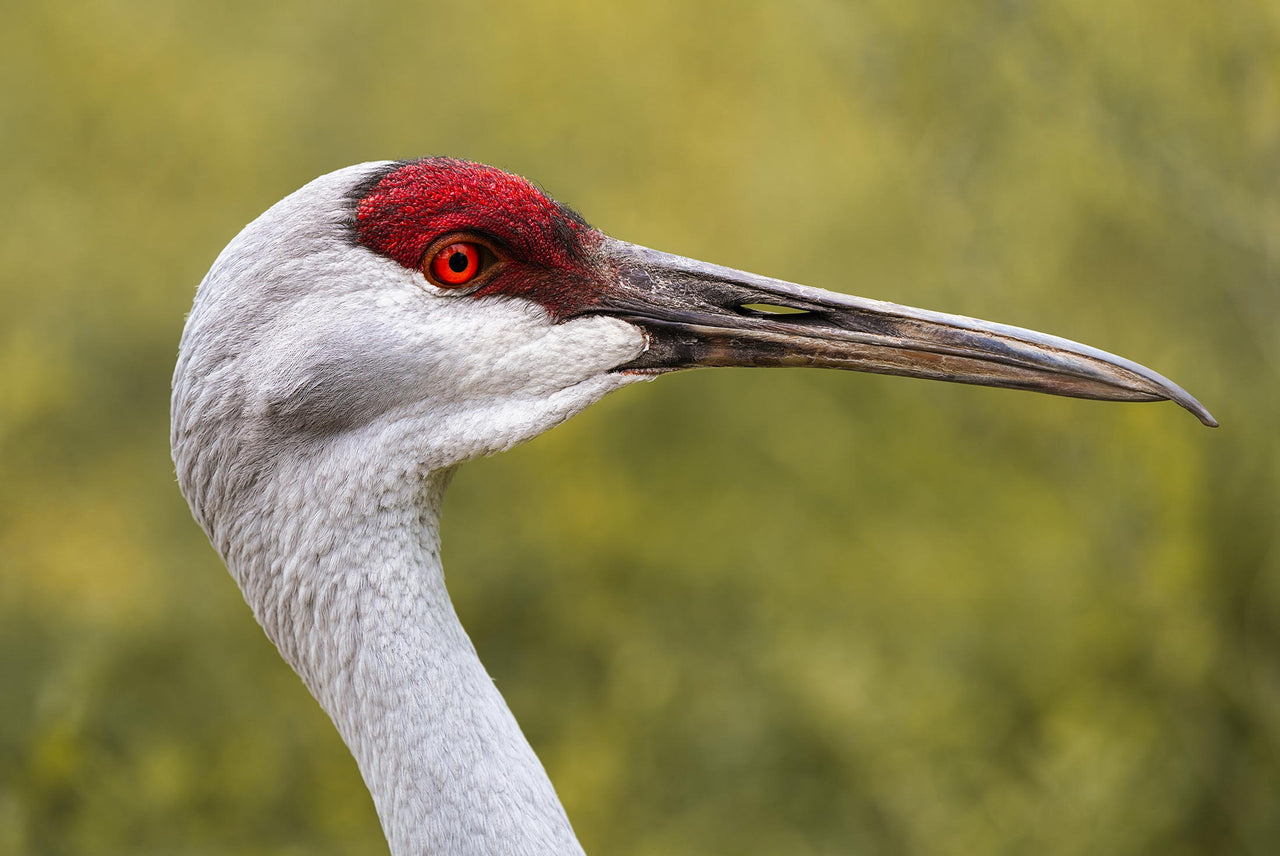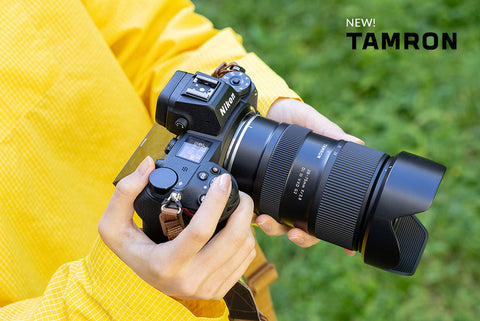Words and images by Bill Koley
The Sandhill Crane, a majestic bird with grey and tan feathers and crimson head, migrate into Nebraska for their annual layover starting in mid-February through the end of March. While here, these cranes put on quite a show with their loud calls and their unique and sprightly dances. With almost half a million birds flocking together on the banks of Nebraska's shallow waterways and prairie landscapes, it makes sense why photographers and wildlife lovers far and wide gather to capture the spectacle.
If you plan on heading out to Nebraska's Platte River Valley with a camera and long lens in hand, we've put together a list of photography tips and etiquette rules to follow.
- - Dress in subdued colors to blend into the surroundings, so you're less noticeable to the cranes. Also, be sure to dress for the weather and have some clothing options. The temperature in Nebraska can fluctuate quite a bit during the day this time of year. Photo gloves with removable fingertips are an excellent item to have in your bag.
- - Bring along your longest lens to reach faraway subjects as they can move away quickly and out of range of other lenses. If you don't have a good lens in your bag and you're not ready to buy, be sure to ask about our lens rentals in Omaha and Lincoln!
- - Wide-Angle lenses are also good to have in your bag to capture wide shots of the bird-filled landscape. Images of the cranes along the river or flying in the sky against a beautiful sunrise or sunset are breathtaking.

Camera Settings:
- - If you are comfortable using your camera in Aperture Priority (Av or A) or Manual (M), then you should use one of those.
- Aperture priority mode (Av or A) will allow you to choose your aperture, while the camera decides the shutter speed dependent on the light available.
- Manual mode is more complex since you'll have to select the correct shutter speed and aperture to get the right exposure. This mode takes some time to master if you are new to photography, especially wildlife photography. When photographing moving animals with changing backgrounds, this setting is ideal.
- If you're a beginner and looking for something more automatic, try the Sports & Action mode. The camera will set the aperture, shutter speed, ISO, and autofocus to a preconfigured setting.
- - Autofocus is your friend, especially if you have a newer mirrorless camera with animal or bird AF tracking. Try capturing the crane against a simple background like the sky or water for the best results.

Image by Bill Koley | Sony Alpha a7R Mark II and Sony 400mm f/2.8 Lens,
400mm, f/8.0, 1/2500 second, ISO 500, manual mode
- - Correct shutter speed is essential for capturing the cranes in sharp detail. However, the shutter speed settings depend on your focal length and distance to the subject. Here are a few recommendations to start with, but remember to experiment depending on your camera set-up:
- - Don’t be afraid to bump up your ISO to get the shot. A slow shutter speed and low ISO with a telephoto lens result in badly exposed and blurry photographs. However, too high of an ISO setting, and you get a lot of noise. The big thing here is to experiment to find the correct shutter speed for your focal length to attain crisp photos with the amount of noise you're comfortable with.
 Image by Bill Koley shot with Canon EOS 80D and Tamron 18-400mm f/3.5-6.3 Di II VC Lens, 400mm, f/6.3, 1/500 second, ISO 400, manual mode.
Image by Bill Koley shot with Canon EOS 80D and Tamron 18-400mm f/3.5-6.3 Di II VC Lens, 400mm, f/6.3, 1/500 second, ISO 400, manual mode.
Additional Tips to Keep in Mind:
- - Be sure to have a good number of memory cards on hand. It's easy to fill a card in a single location because of the number of birds and multiple opportunities for great shots.
- - Tripods are also great to have with you. If you find a location you love, you can set up your camera while also getting good support for clear images.
- - Bringing along a spotting scope or set of binoculars is a great idea for
scoping out the action to find where to set-up or to just sit back and watch the show.  Image by Bill Koley | Fujifilm X-H1 and Fujifilm 100-400mm f/4.5-5.6 Lens,
Image by Bill Koley | Fujifilm X-H1 and Fujifilm 100-400mm f/4.5-5.6 Lens,
400mm, f/5.6, 1/1250 second, ISO 800, manual mode- - Don’t fight the sun; make it your friend. When trying to capture images of the cranes in the fields, place the sun at your back whenever possible. This will help in getting better exposure and more detail in your photographs.
- - Don’t go to a blind experience thinking you will see everything. Spend the day traversing the side roads and fields to experience the migration, too. One of the easiest ways to photograph the Sandhill Cranes is to find them in the fields after leaving the river in the morning.
Etiquette & Safety Rules to Follow
- - Give the cranes plenty of room to move about undisturbed.
- - Don’t stand on bridges by the river; it’s dangerous, and you might not be seen by or hear the traffic coming, nor may they see you until it's too late.
- - Abide by property lines, signs, fences, and rules; if you shouldn’t be there, don’t go there.
- - Don’t be a road hog, it's easy to be tempted to stop and watch something from a busy road or a side road—pullover in a place where it’s safe. Obey the traffic laws; you’re around busy highways and folks who regularly travel the roads, so you can become easily distracted by beautiful subjects.

Image by Bill Koley | Sony Alpha a7R Mark II and Sony 400mm f/2.8 Lens,
400mm, f/5.6, 1/640 second, ISO 100, manual mode
Where to photograph the Sandhill Crane Migration:
Ian Nicolson Audubon Center at Rowe Sanctuary
44450 Elm Island Road
Gibbon, NE
http://rowe.audubon.org
• Viewing Tours • Photography Tours
• Overnight Photography Blinds
Crane Trust and Visitor’s Center
9325 South Alda Road
Wood River, NE 68883
https://cranetrust.org
• Viewing Tours • Overnight and Multiple Day Photography Safaris
The Crane Trust is a good resource for information on where the birds are gathering. Stop by, and they will glad to give you some guidance.
Fort Kearny State Recreation Area Hike/Bike Bridge
1020 V Road
Kearney, NE
http://visitkearney.org
Plautz Viewing Platform
1.5 miles south of 1-80
Exit 285 (Gibbon)
http://cpnrd.org/crane-viewing-sites/
Alda Crane Viewing Site:
2 miles South of I-80
Exit 305 (Alda)
https://www.nrdnet.org/rec-area/alda-crane-viewing-site




